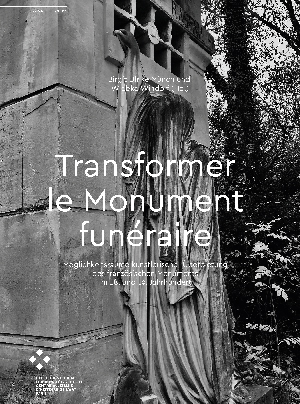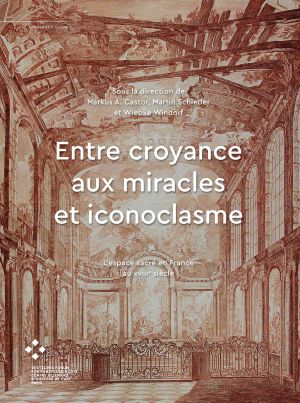Jollet, Étienne
Transformer le Monument funéraire: Möglichkeitsräume künstlerischer Überbietung des französischen Monuments im 18. und 19. Jahrhundert
The thoroughly original French sculpture of the 18th and 19th centuries has so far too often been discussed only in the context of an illustrated history of mentality, thereby failing to recognize its independence. Certainly, the weighty assessment of Erwin Panofsky, who attested to a lack of innovative spirit in funerary sculpture after Bernini, also contributed to this. This volume seeks to explore the “spaces of possibilities” that contribute to a deeper understanding of memorial culture and its transformations, and argues to overcome the rigid division into pre- and post-revolutionary art. In addition to the spaces of the monument, which were subject of a transition around 1800 due to the change of the burial site, the contributions perspective the different public spheres of these transformations, they ask about the innovative power of the “enlightened” (grave) monument and its new and resilient functions.
La sculpture française des XVIIIe et XIXe siècles, qui était en tout cas originale, n’a jusqu’à présent trop souvent été abordée que dans le cadre d’une histoire illustrée des mentalités, ne reconnaissant ainsi pas son indépendance. Certes, l’évaluation pesante d'Erwin Panofsky, qui avait attesté d’un manque d’esprit novateur dans la sculpture funéraire après Bernin, y a également contribué. Le présent volume se propose au contraire d’explorer les « espaces de possibles » permettant une meilleure compréhension de la culture du monument funéraire et de ses transformations ; il plaide ce faisant pour un dépassement de la stricte démarcation entre art pré- et postrévolutionnaire. Outre les espaces du monument, métamorphosés sous l’effet du changement de lieu des sépultures au tournant du XIXe siècle, les articles ici réunis interrogent les différentes sphères publiques de ces mutations, la puissance d’innovation du monument (funéraire) « éclairé », hérité des Lumières ou encore les nouvelles fonctions de résilience qui lui sont attribuées.
Entre croyance aux miracle et iconoclasme: L’espace sacré en France au XVIIIe siècle
This conference volume examines the evidence, religious experiences and aesthetic transformations of sacred space in the Age of Enlightenment from an inter- and transdisciplinary perspective. To what extent should we understand the church in the 18th century not only as a sacred space, but also as a place that attracts believers and tourists, clergy and artists, nobles and citizens, men and women alike, and at the same time has a social, aesthetic and emotional dimension? How can we explain the fundamental secularisation and the dissolution of boundaries that affected the sacred space between the death of Louis XIV and the French Revolution? How is the question of the credibility of transcendence dealt with in the age of the emerging natural sciences, encyclopaedias and the progress of knowledge in art? Against the background of the confrontation between criticism of the church and absolutism, atheism, demystification of the religious and plausible reactualisation of the spiritual, (syn)aesthetic concepts of sacred spaces are of particular relevance. Not only integrated into art-theoretical discourses, they are a tangible expression of the continuous readjustment of Enlightenment society.








